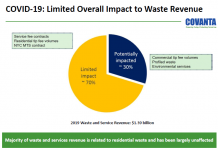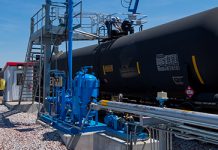by Jim Lane, Biofuels Digest
For every ethanol blend everywhere these days, there seems to be a war on.
A war in India over 22% blends. A war in Brazil over exactly what baseline blend ratio (somewhere int he 20s) is ideal. A war on in Europe to roll back first-gen ethanol to around 2% blending. A war in New South Wales, Australia over whether there should be any ethanol mandating at all. A war in the US as conservatives aim to haul belnding down to 9.7% while ethanol producers have clearly aimed at a 15% baseline blend.
And so on and so on. Only Canada seems at peace, perhaps because hockey season has not yet started.
Now, war is surely about to break out over E25-E30 blending, now that RFA CEO Bob Dinneen testified in DC in his courtly but adamant manner that a high-octane, low-carbon ethanol blend in optimized engines would be the lowest cost means of achieving compliance with fuel economy and greenhouse gas standards for car model years 2022-2025 and beyond,
As Dinneen put it, “most new and emerging internal combustion engine technologies are enabled by a high-octane, low-carbon fuel blend. For example, high-compression ratio technology (which EPA estimates will comprise 44% of the market by 2025) demands higher octane fuels to limit premature fuel ignition in the cylinder,” he said.
What’s he’s pointing to are ethanol’s unique properties—high octane rating, low lifecycle carbon emissions, high octane sensitivity, and high heat of vaporization. “These attributes make ethanol a highly attractive component for the high-octane fuel blends of the future,” he said.
“A high-octane fuel (98-100 RON) could be produced today simply by blending 25-30% ethanol with existing gasoline blendstocks. However, due to the inertia of fuel and vehicle markets, this transition will not occur on its own. Action by the EPA is necessary to catalyze the development and introduction of high-octane, low carbon fuels into the consumer market, just as EPA action was required to eliminate lead, limit benzene, and reduce the sulfur content of our gasoline and diesel fuel,” Dinneen testified.
In 2012, EPA and NHTSA promulgated final regulations establishing the CAFE and GHG standards for 2017–2025. Included in the final rule was a requirement that the agencies conduct a “midterm evaluation” for the 2022–2025 standards and determine whether the standards established in 2012 are still appropriate in light of the latest available data.
According to RFA and Ricardo, many of the advanced internal combustion technologies examined by the two agencies would experience increased fuel efficiency and generate fewer emissions if operating on fuels with higher octane ratings than today’s regular grade gasoline, which has an octane rating of 87 (anti-knock index). According to the Ricardo analysis, “It is clear that implementing a high octane fuel standard would provide opportunity for increased engine efficiency and hence reduced greenhouse gases, and doing so by blending with ethanol provides an even greater benefit due to ethanol’s high heat of vaporization combined with the inherently low carbon footprint of ethanol.”
In his testimony, Dinneen urged EPA to ensure its revised Final Determination:
–treats future engines and fuels as integrated systems;
–fully accounts for the findings of DOE’s “Co-optima” research initiative;
–includes a robust cost-benefit analysis of various CAFE/GHG compliance pathways, including the use of high-octane low-carbon fuels in optimized engines; and
–lays out the regulatory roadmap to broad commercial introduction of high-octane, low carbon fuels in advanced internal combustion engines.
The hard data on fuel value and choice
Let’s ask the question — Where would a true Libertarian buy fuel — thinking only about the freedom to pursue the greatest value expressed in cost per mile?
To create our chart, we took an average of the fuel economy, by blend, from a study by Energy & Environmental Research Center at the University of North Dakota on real-world fuel economy, with a range of blends — and applied it to the real-world prices we see at E85prices.com. (Regretfully, the EERC study did not look at E15 ethanol blends — so we split the difference between E10 and E20 results to estimate E15’s fuel economy).
Here’s the latest price spread from E85prices.com.

And here’s the winner — surprisingly, it’s E50, which is sellling at an 81 cent discount to straight gasoline after adjusting for the change in fuel economy. That’s a straight up 28% savings. Wow.

But all blends performed better, on straight value, than straight gasoline, and second among these in real-world discount value was E30 and next in line was E20. So RFA may well be onto something if they are touting a greenhouse-gas winner that looks like a winner on straight economics, too.
Confirmation on E20 blends from Clariant, Mercedes-Benz and Haltermann Carless
In February we reported that Clariant, Mercedes-Benz and Haltermann Carless found that “sunliquid 20 exhibited very good combustion properties with a high degree of efficiency and identical consumption compared to today’s standard E10 fuel,” according to the consortium. The 20 percent cellulosic ethanol by volume had another decisive advantage. In addition to the higher CO2 savings and reduced emissions, it gives the fuel a significantly higher octane number (RON) of over 100.
More confirmation on higher blends from Oak Ridge National Laboratory
In August 2016, we reported that Oak Ridge National Laboratory, the National Renewable Energy Laboratory and Argonne National Laboratory have published a joint report looking at mid-level ethanol blends says that high octane fuels such as E25-E40 could offer significant benefits for the US. Growth Energy agrees with the results of the report, saying, “As the Environmental Protection Agency, the National Highway Traffic Safety Administration and the California Air Resources Board undertake their mid-term review, they should appropriately recognize the ability of high-octane, mid-level ethanol blends to meet the future greenhouse gas and fuel economy standards.”
The European Commission’s new report offers support to high-blend advocates
Last month, we reported that a new report published by the European Commission highlights several benefits of higher ethanol blends in petrol, including reducing emissions of dangerous pollutants and boosting car engine performance, according to ePure.
The study, conducted by ICF for the Commission’s Directorate-General for Climate, assessed the impact of higher levels of bio components in transport fuels. It found that increasing the amount of ethanol in petrol blends – for example from 5% to 10% or 20% – would have a positive effect on vehicle emissions and air quality and help reduce reliance on fossil petroleum products.
Do people know much about ethanol blends?
In March we reported that a nationwide research study of over 2,000 adults 18+ conducted online by Harris Poll on behalf of the Outdoor Power Equipment Institute (OPEI) has found that Americans seem to remain confused about new fuel choices at the pump and their appropriate usage. Even more concerning are reports of consumers mis-fueling their engine products. This year’s poll shows more consumers have incorrectly used an E15 or higher ethanol fuel in an engine not designed for it this year compared to 2015 (five percent this year vs. three percent in 2015).
The OPEI survey found that more Americans who own outdoor power equipment are paying attention to the type of fuel they use this year than in years past, with 44 percent saying they pay attention (compared with 36 percent in 2016 and 35 percent in 2015). Additionally, awareness of ethanol in gasoline seems to remain steady, with 84%, overall, reporting they are aware of that fact this year compared to 85% in 2016 and 84% in 2015.
Yet, boaters are breaking speed records with high-ethanol blends
Last September we reported that In Missouri, Last weekend, competitors from around the country participated in two major powerboat racing competitions, the Lake of the Ozarks Shootout in Missouri, and the Mentor Superboat Grand Prix in Mentor, Ohio. At the Lake of the Ozark’s shootout, Don Onken’s American Ethanol Mystic Powerboats Catamaran broke its own previous record of 208 mph, and took home “Top Gun” honors with a record setting speed of 217 mph while running on a high-ethanol fuel blend.
Meanwhile, the policy battle over E15 adoption continues
As we reported last September, seven governors sent a bipartisan letter to EPA asking that the Agency “remove a significant regularly obstacle that is preventing large-scale availability and use of E15 and mid-level ethanol blends.” Governors Terry Branstad (R-Iowa), Sam Brownback (R-Kansas), Mark Dayton (D-Minnesota), Jay Nixon (D-Missouri), Pete Ricketts (R-Nebraska), Jack Dalrymple (R-North Dakota), and Dennis Daugaard (R-South Dakota) sent the letter to EPA Administrator Gina McCarthy Tuesday asking her to “correct the unfair Reid vapor pressure (RVP) treatment of E15.”
In May 2016, we reported that biofuel critics Rep. Bill Flores (R-Texas), Peter Welch (D-Vt.), Bob Goodlatte (R-Va.) and Jim Costa (D-Calif.) introduced legislation that would cap ethanol blends in the U.S. transportation pool to no more than 9.7 percent by volume.
Pushback in India
Last September, we reported that India’s oil retailers association is pushing back against the government’s recent policy announcement laying out plans towards a 22.5% ethanol blend. The Petroleum Dealers Association is concerned about water separation issues resulting from a high level ethanol blending in a city such as Nagpur with high humidity levels that would lead to vehicle problems and later problems with consumers. Dealers are already suffering from water challenges in underground tanks and are concerned higher ethanol blends would exacerbate the problem.
Pushback in the EU and UK
This week we reported that Vivergo Fuels says the government’s proposed 2% cap of crop-based biofuels—far below the EU’s 7% cap—would destroy the country’s ethanol industry in the northeast that would not only lead to a loss of jobs in ethanol production and R&D but also leave farmers to export their low quality feed wheat at much lower prices than what they’re getting from ethanol producers. Livestock producers would lose a key source of feed protein and would have to look to imports to fill the gap.
As background, the European Parliament’s environmental committee approved in 2015 the text on biofuels reform negotiated between itself, the European Council and the European Commission. The legislation caps first generation biofuel use at 7%.
More links and data
RFA recently filed comments with NHTSA on its environmental impact statement of the MTE. It includes a literature review of ethanol use for high octane fuels by global automotive engineering firm Ricardo Inc.
Also, Bob Dinneen’s complete testimony, as prepared, is here.
And August 2016, the American Coalition for Ethanol released a new publication that will help answer some of the most frequently asked questions by retailers about E15, E85 and flex fuels. ACE describes the E15 and Flex Fuel Retailer Roadmap, as a reference guide for fuel marketers, retailers and equipment companies.








